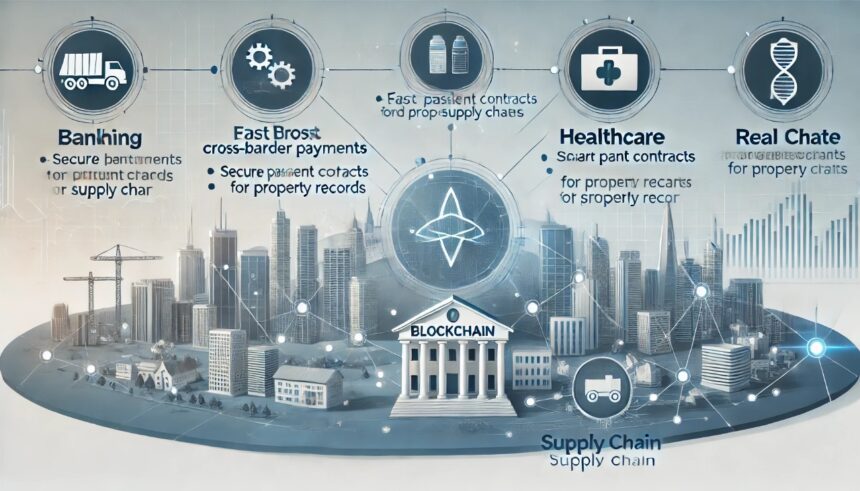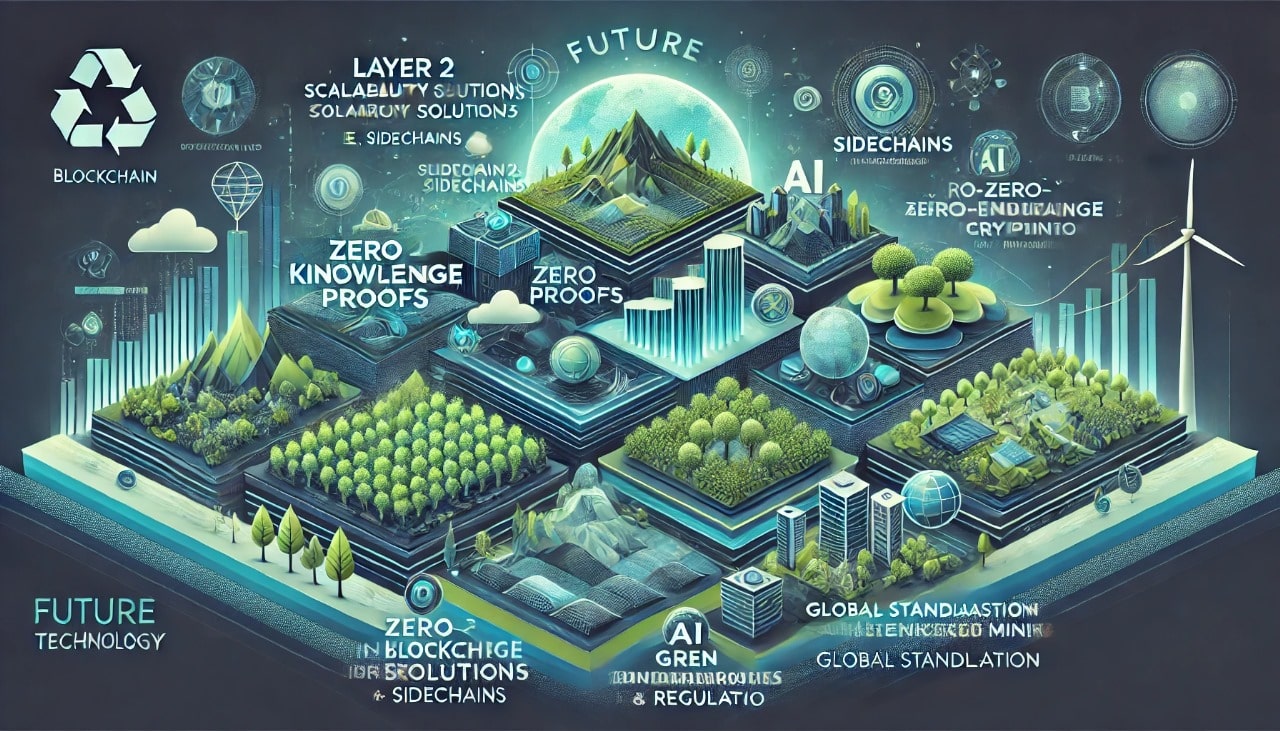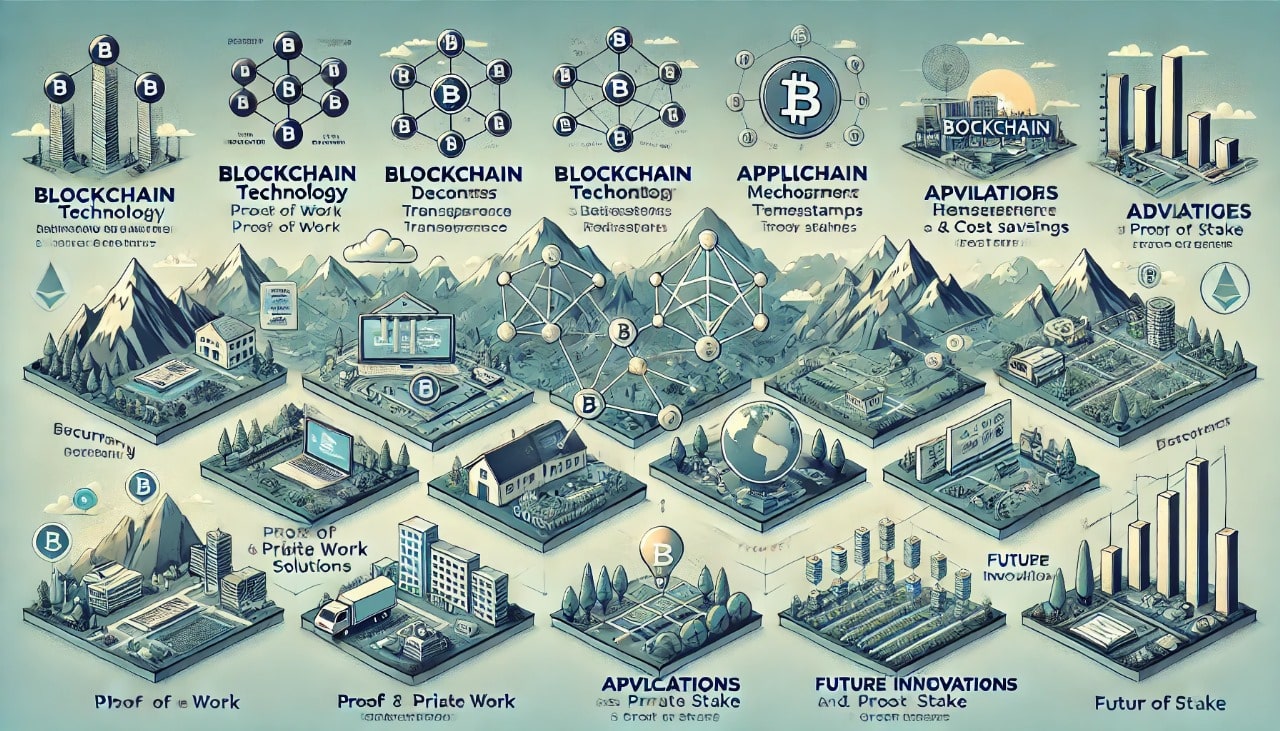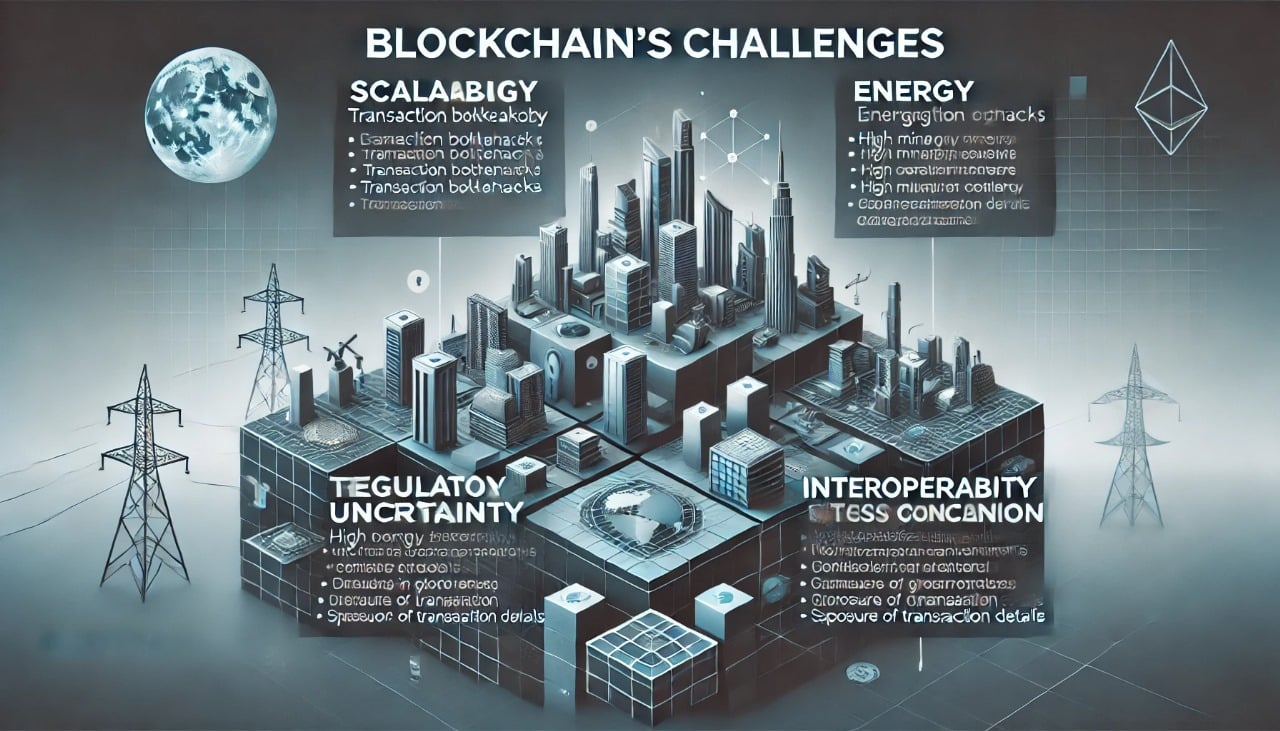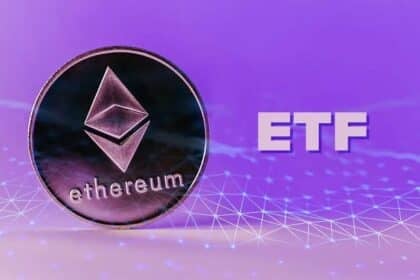Blockchain technology has rapidly emerged as one of the most transformative innovations of the 21st century. Initially designed as the underlying technology for cryptocurrencies like Bitcoin, blockchain has expanded far beyond its origins, finding applications in banking, healthcare, real estate, supply chain management, and more. In this article, we will delve into what blockchain technology is, how it works, and how it is revolutionizing various industries.
Understanding Blockchain Technology
At its core, blockchain technology is a decentralized, distributed ledger system that records transactions across multiple computers in a way that ensures the data’s integrity, transparency, and security. Unlike traditional databases managed by a central authority, blockchain relies on a peer-to-peer network, making it resistant to tampering and fraud.
Key Features of Blockchain
- Decentralization: No central authority controls the data; all participants in the network share responsibility.
- Transparency: All transactions are recorded on a public ledger accessible to all participants.
- Immutability: Once data is recorded, it cannot be altered without consensus from the network.
- Security: Transactions are secured through cryptographic algorithms.
- Smart Contracts: Self-executing contracts with predefined rules that automate processes.
How Blockchain Technology Works
Blockchain functions through a series of interconnected processes:
1. Data Structure
Blockchain organizes data into “blocks,” each containing a list of transactions. These blocks are linked together in chronological order, forming a chain. Each block includes:
- Transaction Data: Information about the transactions recorded in that block.
- Timestamp: The date and time the block was created.
- Hash: A unique cryptographic signature of the block’s contents.
- Previous Block’s Hash: Links the current block to the one before it, ensuring continuity.
2. Consensus Mechanisms
Consensus mechanisms ensure all participants in the network agree on the validity of transactions. Popular methods include:
- Proof of Work (PoW): Participants solve complex mathematical puzzles to validate transactions, as used in Bitcoin.
- Proof of Stake (PoS): Validators are chosen based on the number of coins they hold and are willing to “stake.”
3. Cryptography
Blockchain uses cryptographic algorithms to secure transactions and control access to the network. Public and private key cryptography ensures only authorized participants can initiate transactions.
4. Distributed Ledger
The blockchain’s ledger is maintained across multiple nodes (computers) in the network. Each node has a copy of the entire blockchain, ensuring data redundancy and security.
5. Smart Contracts
Smart contracts are self-executing agreements with terms directly written into code. These contracts automatically execute predefined actions when conditions are met, eliminating the need for intermediaries.
Applications of Blockchain Technology
Blockchain’s versatility makes it applicable across numerous industries. Below, we explore its impact on banking, healthcare, real estate, and supply chain management.
Blockchain Technology in Banking
Revolutionizing Transactions
Blockchain is transforming the banking industry by enabling faster, more secure, and cost-effective transactions. Traditional banking systems often rely on intermediaries, which increase costs and processing times. Blockchain eliminates these intermediaries by providing a direct, peer-to-peer transaction mechanism.
Use Cases
- Cross-Border Payments: Blockchain reduces the time and cost of international money transfers. Ripple, for example, uses blockchain to enable near-instant cross-border payments.
- Fraud Prevention: Immutable ledgers make it nearly impossible to alter transaction records, reducing fraudulent activities.
- Lending and Borrowing: Smart contracts automate loan agreements, ensuring transparency and reducing paperwork.
- Central Bank Digital Currencies (CBDCs): Governments and central banks are exploring blockchain to create digital versions of fiat currencies to improve efficiency and traceability.
Blockchain Technology in Healthcare
Improving Data Management
Healthcare systems generate vast amounts of sensitive data that need to be securely stored and shared among multiple stakeholders. Blockchain offers a secure, interoperable platform for managing this data.
Use Cases
- Electronic Health Records (EHRs): Blockchain ensures patients’ medical records are stored securely and can only be accessed with their consent.
- Drug Supply Chain: Blockchain tracks pharmaceuticals from manufacturers to consumers, preventing counterfeit drugs.
- Clinical Trials: Blockchain ensures transparency in clinical trials by securely recording data and preventing tampering.
- Health Insurance Claims: Smart contracts streamline the insurance claim process, reducing fraud and processing times.
Blockchain Technology in Real Estate
Enhancing Transparency and Efficiency
The real estate industry often suffers from inefficiencies, lack of transparency, and fraudulent activities. Blockchain addresses these issues by digitizing and securing property transactions.
Use Cases
- Property Records: Blockchain provides a tamper-proof system for recording ownership, reducing disputes.
- Smart Contracts: Automating agreements between buyers, sellers, and intermediaries streamlines the transaction process.
- Fractional Ownership: Blockchain enables fractional ownership of properties, making real estate investments more accessible.
- Mortgage Processing: Blockchain simplifies the mortgage approval process by securely managing documentation and approvals.
Blockchain Technology in Supply Chain Management
Increasing Transparency and Accountability
Supply chains are often complex, involving multiple stakeholders. Blockchain provides end-to-end visibility, ensuring transparency and accountability at every stage.
Use Cases
- Product Traceability: Blockchain tracks products from their origin to the consumer, ensuring authenticity.
- Fraud Reduction: Immutable records prevent tampering and ensure the integrity of supply chain data.
- Sustainability: Blockchain helps verify the ethical sourcing of materials and adherence to sustainability standards.
- Inventory Management: Real-time updates on inventory levels improve efficiency and reduce waste.
Advantages of Blockchain Technology
Enhanced Security: Cryptographic Encryption Protects Data from Unauthorized Access and Tampering
Blockchain’s security is one of its standout features, driven by the integration of cryptographic encryption. Each transaction on the blockchain is encoded with a unique cryptographic signature, which ensures that data remains secure and tamper-proof. Public and private key mechanisms are used to authenticate participants and validate transactions.
This eliminates unauthorized access and significantly reduces the risk of hacking. Additionally, blockchain’s decentralized nature enhances security by ensuring that no single point of failure exists; even if one node is compromised, the integrity of the entire system remains intact. This level of security is particularly advantageous in sectors like healthcare, where sensitive data such as patient records must be protected, and in finance, where preventing fraud is critical.
By leveraging blockchain’s security, organizations can foster trust among stakeholders, reduce reliance on third-party auditors, and create robust systems that withstand cyber threats.
Increased Efficiency: Automation Through Smart Contracts Reduces Manual Processes and Associated Costs
Blockchain’s ability to streamline operations through automation is a game-changer for many industries. Smart contracts—self-executing agreements with predefined rules coded into the blockchain—allow businesses to automate complex workflows without requiring intermediaries. For example, in real estate, smart contracts can automate property transactions, ensuring all conditions, such as payment receipt, are met before ownership is transferred.
Similarly, in supply chain management, blockchain can automate the release of payments to suppliers once delivery is verified, reducing delays and minimizing paperwork. By removing manual processes, blockchain enhances operational efficiency, reduces human error, and cuts costs. Organizations adopting blockchain can redirect resources toward innovation and value creation instead of administrative tasks. The result is not only faster transaction processing but also a more agile and competitive business model.
Transparency: All Participants Have Access to a Shared Ledger, Promoting Trust
Transparency is a cornerstone of blockchain technology. The shared ledger accessible to all participants ensures that every transaction is visible and verifiable. This openness fosters trust among stakeholders, as all parties can independently verify the integrity of the data. In industries like supply chain management, transparency is critical for tracking the origin and movement of goods.
Blockchain provides an unalterable record of each step, helping businesses and consumers confirm product authenticity. In finance, blockchain transparency reduces the risk of corruption and fraud by enabling regulatory bodies and auditors to monitor transactions in real time. This increased visibility also encourages accountability, as actions recorded on the blockchain are permanent and traceable. By promoting trust through transparency, blockchain strengthens business relationships and boosts confidence in decentralized systems.
Cost Savings: Eliminating Intermediaries Reduces Transaction Costs
Blockchain technology offers significant cost savings by removing intermediaries from transactions. Traditional systems often rely on banks, payment processors, or other third parties to facilitate transactions, each adding fees and delays. Blockchain eliminates the need for these intermediaries by enabling direct peer-to-peer interactions.
For instance, cross-border payments, which traditionally incur high fees and take days to process, can be completed almost instantly and at a fraction of the cost using blockchain. Smart contracts further contribute to cost savings by automating tasks that would typically require legal or administrative personnel. Industries like real estate, where title verification and escrow services are costly, can save millions by leveraging blockchain for secure and efficient property transactions. By reducing costs, blockchain enables businesses to allocate resources more effectively and offer competitive pricing to customers.
Improved Traceability: Blockchain’s Audit Trail Makes It Easy to Trace Transactions and Assets
Blockchain’s ability to provide an immutable audit trail enhances traceability across various applications. Each transaction recorded on the blockchain includes detailed information about the origin, ownership, and movement of assets. In supply chain management, this allows companies to track products from raw material sourcing to final delivery, ensuring authenticity and compliance with regulations.
For example, blockchain can verify the ethical sourcing of diamonds or confirm that a pharmaceutical product has not been tampered with during transit. In financial services, blockchain’s traceability helps regulators and auditors monitor transactions for compliance and detect suspicious activity. This improved visibility not only mitigates risks but also builds consumer trust by guaranteeing transparency. With blockchain, businesses can confidently address traceability challenges and provide verifiable proof of quality and origin.
Decentralized Control: Reduces Dependency on Centralized Institutions, Empowering Users
Decentralization is a defining feature of blockchain, empowering users by reducing dependency on centralized authorities. Traditional systems, such as banks or governments, often act as intermediaries controlling data and transactions. Blockchain shifts this paradigm by distributing control across a network of participants.
This decentralized structure ensures that no single entity can manipulate the system, making it more resilient to fraud and censorship. In the financial sector, decentralized finance (DeFi) platforms allow individuals to manage their assets independently, offering greater control over investments and transactions.
Similarly, in real estate, decentralized platforms enable peer-to-peer property exchanges without relying on brokers. By democratizing access and control, blockchain fosters inclusivity, enhances user autonomy, and creates systems that are fairer and more secure.
Data Integrity: The Immutability of Blockchain Ensures Data Remains Accurate and Trustworthy
Data integrity is one of blockchain’s most powerful attributes. Once a transaction is recorded on the blockchain, it cannot be altered without the consensus of the network, ensuring that data remains accurate and reliable. This immutability is particularly critical in industries where trust and verification are paramount.
For example, in healthcare, blockchain can maintain an unchangeable record of patient medical histories, reducing errors and ensuring accurate diagnoses. In financial services, the integrity of blockchain data prevents unauthorized modifications to transaction records, minimizing fraud. Additionally, the decentralized nature of blockchain ensures that data is replicated across multiple nodes, preventing loss due to system failures.
By guaranteeing data accuracy and trustworthiness, blockchain enables businesses and institutions to operate with confidence and build credibility with stakeholders.
Challenges of Blockchain Technology
Scalability: Handling Large Volumes of Transactions Remains a Challenge for Some Blockchain Networks
Scalability is one of the most pressing challenges in blockchain technology. Many blockchain networks, especially first-generation ones like Bitcoin and Ethereum, struggle to process a high volume of transactions efficiently. This limitation arises from consensus mechanisms such as Proof of Work (PoW), which require significant computational resources and time to validate transactions.
For instance, Bitcoin can only process around 7 transactions per second (TPS), and Ethereum, in its current form, handles about 15 TPS. In contrast, traditional payment systems like Visa can process thousands of TPS, making blockchain seem less practical for large-scale use. Solutions like Layer 2 protocols, sharding, and improved consensus mechanisms like Proof of Stake (PoS) are being developed to address this issue.
These advancements aim to increase transaction throughput without compromising the decentralization and security that make blockchain valuable. However, achieving scalability remains a delicate balance, and further innovation is needed to make blockchain networks competitive with traditional systems.
Energy Consumption: PoW-Based Blockchains Like Bitcoin Consume Significant Energy
Energy consumption is a significant criticism of blockchain technology, particularly for PoW-based networks like Bitcoin. The mining process in PoW involves solving complex mathematical puzzles to validate transactions and add new blocks to the chain. This process requires substantial computational power, leading to enormous energy consumption.
For context, the annual energy usage of Bitcoin mining is comparable to that of some small countries. This environmental impact has sparked debates about the sustainability of blockchain technology. Critics argue that the energy-intensive nature of PoW is unsustainable, while proponents highlight the transition to greener solutions, such as renewable energy for mining operations and the adoption of less energy-intensive consensus mechanisms like PoS. Ethereum\u2019s successful transition to PoS in 2022 reduced its energy consumption by over 99%, setting an example for other networks.
While progress is being made, energy consumption remains a barrier to widespread adoption, particularly in an era where environmental sustainability is a global priority.
Regulatory Uncertainty: Governments Worldwide Are Still Grappling with How to Regulate Blockchain Technology
Regulatory uncertainty poses a significant challenge to the adoption and development of blockchain technology. Governments and regulatory bodies worldwide are still figuring out how to address the unique aspects of decentralized systems. Key issues include defining cryptocurrencies as assets, securities, or commodities, establishing tax policies, and addressing concerns about money laundering, fraud, and terrorism financing.
The lack of consistent regulations across jurisdictions creates confusion for businesses and investors. For example, while some countries like El Salvador have embraced Bitcoin as legal tender, others like China have imposed strict bans on cryptocurrency trading and mining.
This disparity hinders global adoption and innovation as companies must navigate a complex web of rules. Clear and harmonized regulations are essential for fostering trust, protecting consumers, and enabling the blockchain ecosystem to thrive. Until then, regulatory uncertainty will remain a roadblock to mainstream adoption.
Integration Issues: Integrating Blockchain with Existing Systems Can Be Complex and Costly
Integrating blockchain technology into existing systems presents technical and financial challenges for organizations. Legacy systems often rely on centralized databases and proprietary software, which are fundamentally different from blockchain\u2019s decentralized and transparent architecture. Transitioning to blockchain requires significant investment in infrastructure, development, and training.
Additionally, blockchain systems may not seamlessly integrate with current workflows, necessitating extensive customization and testing. For instance, in supply chain management, implementing blockchain requires coordination across multiple stakeholders, from manufacturers to distributors, all of whom must adopt compatible systems.
Moreover, the lack of standardized protocols complicates integration further, making it difficult to achieve interoperability between blockchain networks and traditional platforms. While the long-term benefits of blockchain, such as increased efficiency and security, are compelling, the upfront costs and technical hurdles can deter organizations from adopting the technology.
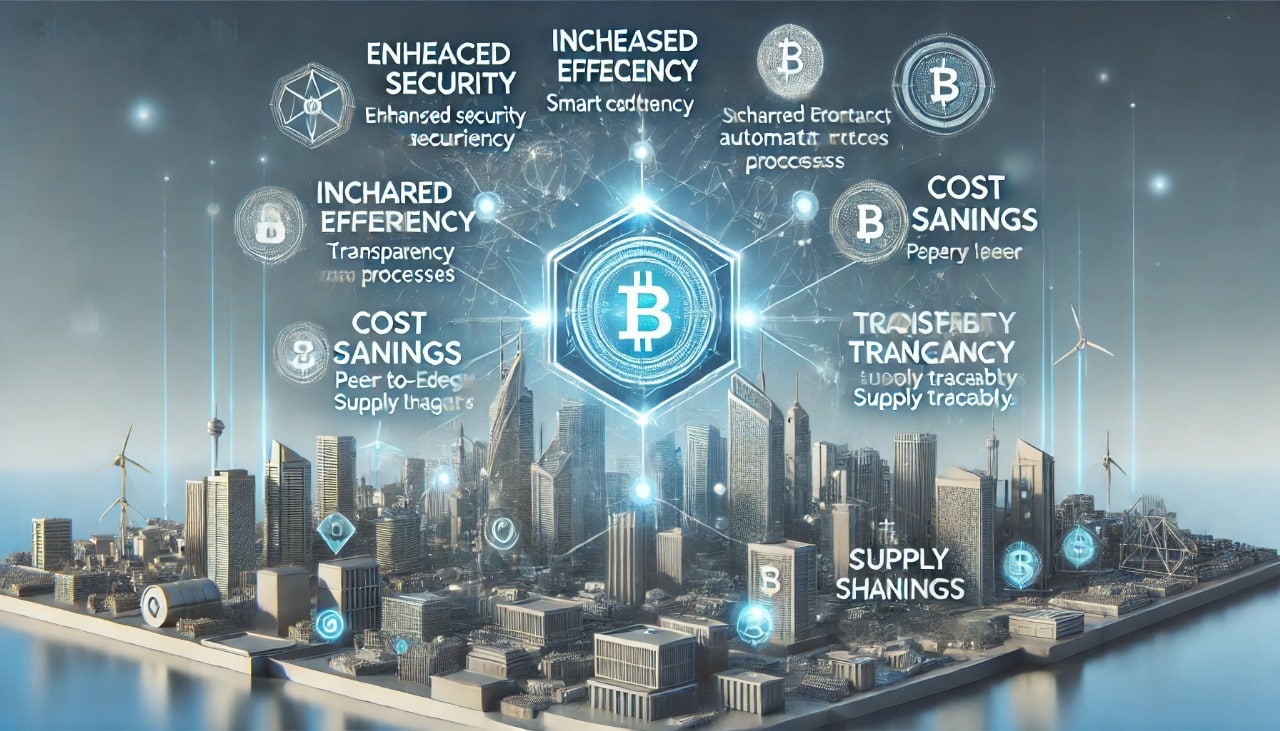
Skill Gaps: A Lack of Blockchain Expertise Can Hinder Adoption
The rapid growth of blockchain technology has outpaced the availability of skilled professionals, creating a significant skill gap in the industry. Blockchain development requires expertise in cryptography, distributed systems, and smart contract programming, all of which are specialized fields. This shortage of talent makes it challenging for organizations to build and deploy blockchain-based solutions. Startups and enterprises alike face difficulties in recruiting developers who are proficient in blockchain languages like Solidity (used for Ethereum) or Rust (popular in Solana).
Moreover, the lack of blockchain knowledge extends beyond technical roles. Business leaders, project managers, and regulators often lack a comprehensive understanding of blockchain\u2019s capabilities and limitations, leading to misinformed decisions and delayed implementation. To address this gap, educational initiatives, certification programs, and industry collaborations are essential. As more institutions offer blockchain courses and training, the skill gap is expected to narrow, but for now, it remains a barrier to widespread adoption.
Interoperability: Different Blockchains Often Struggle to Communicate Seamlessly with One Another
Interoperability is a critical issue in the blockchain space, as most blockchains operate as isolated networks with limited ability to interact. This fragmentation prevents the seamless exchange of data and assets between different blockchains, hindering the growth of decentralized ecosystems. For example, a decentralized application (dApp) built on Ethereum may not be able to interact with a dApp on Solana without a third-party bridge, which can introduce additional costs and security risks.
Interoperability solutions, such as cross-chain bridges and Layer 0 protocols like Polkadot and Cosmos, aim to address this challenge by enabling communication and data exchange across multiple blockchains. However, these solutions are still in their infancy and face their own limitations, such as scalability and security concerns. Achieving true interoperability is crucial for creating a cohesive blockchain ecosystem where assets, information, and functionalities can flow freely, unlocking the full potential of decentralized technology.
Privacy Concerns: Public Blockchains May Expose Transaction Details, Posing Risks to User Privacy
While blockchain technology is celebrated for its transparency, this feature can also pose privacy risks. Public blockchains, like Bitcoin and Ethereum, record all transactions on a ledger that is accessible to anyone. Although transactions are pseudonymous, meaning they are associated with public addresses rather than real-world identities, sophisticated analysis techniques can sometimes de-anonymize users.
This lack of privacy is a significant concern for individuals and businesses handling sensitive information. Privacy-focused blockchains, such as Monero and Zcash, address these concerns by implementing advanced cryptographic techniques like zero-knowledge proofs to obscure transaction details. However, these privacy-enhancing features often face regulatory scrutiny, as they can be exploited for illicit activities.
Striking a balance between transparency and privacy is essential for blockchain to gain broader acceptance. Innovations in privacy-preserving technologies, such as zk-SNARKs and confidential transactions, offer promising solutions, but widespread adoption remains a work in progress.
Future of Blockchain Technology
Blockchain technology is evolving at a rapid pace, with new innovations addressing current limitations and expanding its potential applications. Layer 2 solutions, for example, are designed to improve scalability by handling transactions off-chain while maintaining the security of the underlying blockchain. Zero-knowledge proofs (ZKPs) enhance privacy by allowing one party to prove the validity of information without revealing the actual data, making blockchain more appealing for industries dealing with sensitive information. Quantum-resistant cryptography is also gaining attention to protect blockchain networks against potential threats from quantum computing.
As blockchain becomes more accessible, adoption will accelerate across diverse industries. In finance, decentralized systems replace traditional intermediaries, while blockchain ensures secure data management in healthcare. Governments are also exploring blockchain for digital currencies and transparent governance. With ongoing advancements, blockchain will become a fundamental technology in the global digital infrastructure.

1. Decentralized Finance (DeFi): Expanding Access to Financial Services
DeFi is transforming the financial sector by creating decentralized systems that provide services like lending, borrowing, and trading without intermediaries. Platforms such as Aave and Uniswap empower users to maintain full control over their assets, while smart contracts ensure secure and automated processes. This democratization of finance is particularly beneficial for unbanked populations, offering them access to global financial networks.
2. Non-Fungible Tokens (NFTs): Revolutionizing Digital Ownership
NFTs are redefining ownership in the digital age. By tokenizing assets like art, music, and virtual real estate, NFTs create provable ownership and transferability on the blockchain. Industries such as gaming and entertainment are capitalizing on this trend, enabling creators to monetize their work directly while offering unique experiences to consumers.
3. Web3 and the Metaverse: Creating Decentralized Digital Ecosystems
Web3 represents the next iteration of the internet, emphasizing decentralization and user ownership. Blockchain is the backbone of this ecosystem, facilitating data sovereignty and peer-to-peer interactions. The metaverse further leverages blockchain by enabling immersive virtual environments where users can own and trade assets securely.
4. Interoperability Solutions: Enhancing Cross-Chain Communication
As multiple blockchains emerge, interoperability is crucial for seamless interaction between networks. Protocols like Polkadot and Cosmos are leading the way in enabling cross-chain functionality, fostering collaboration, and expanding the possibilities of decentralized ecosystems.
5. AI and Blockchain Integration: Leveraging AI for Smarter Applications
The integration of AI with blockchain opens new horizons for innovation. AI can optimize blockchain systems by improving transaction speeds, analyzing large datasets, and automating complex processes. Conversely, blockchain enhances AI by ensuring data integrity and enabling decentralized AI marketplaces.
6. Green Blockchain Initiatives: Reducing Environmental Impact
As concerns about energy consumption grow, green blockchain initiatives are gaining traction. Networks like Ethereum’s transition to Proof of Stake (PoS) have significantly reduced energy usage. Other projects focus on using renewable energy for mining and developing carbon-neutral blockchain solutions.
7. Global Standards for Blockchain: Harmonizing Regulations
The lack of standardized regulations has hindered blockchain’s adoption. Efforts to harmonize global policies aim to create a unified framework for blockchain operations, fostering trust and encouraging cross-border collaborations. Such standards will also provide clarity for businesses and investors, accelerating mainstream adoption.
Conclusion
Blockchain technology has proven to be a game-changer across various industries, from banking and healthcare to real estate and supply chain management. By offering unparalleled transparency, security, and efficiency, blockchain is paving the way for a more connected and decentralized future. As technology matures and overcomes its challenges, its potential to reshape the world as we know it becomes increasingly apparent.
For industries willing to embrace innovation, blockchain offers a roadmap to a future where trust, transparency, and efficiency are no longer optional but foundational.
Stay tuned to The BIT Journal and keep an eye on Crypto’s updates. Follow us on Twitter and LinkedIn, and join our Telegram channel to be instantly informed about breaking news!



